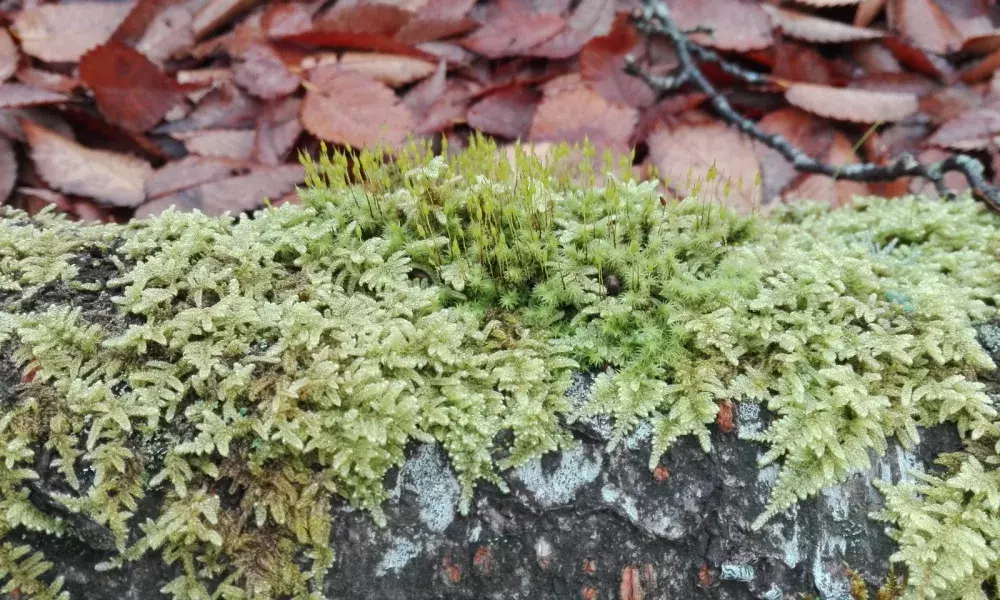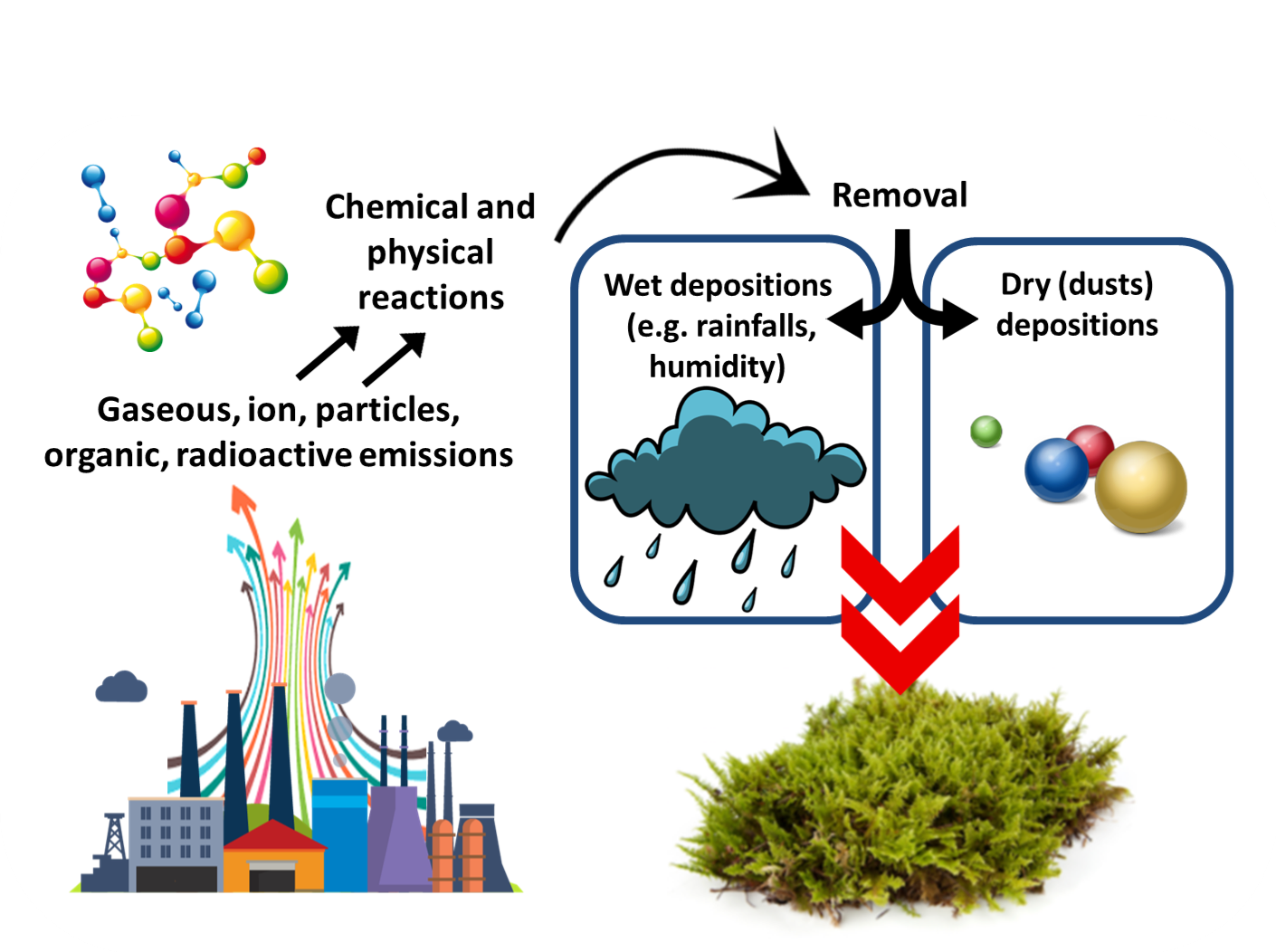Biomonitoring: An alternative way to monitor air pollution in Portici

Why biomonitoring?
Plants damage symptoms differ depending on the air pollutants they have been exposed to, so plants can be used to determine the species of pollutants present in air. Moreover, plants accumulate/entrap pollutants, and as a result can help determine pollutant concentrations and reveal the spatial-temporal trends of air pollutants. Therefore, plants are a simple, low-cost, and effective method to monitor air pollutants.
This is particularly true for mosses, which have been used over the years as bioaccumulators of air pollutants. In particular, mosses do not have specific structures nor roots for taking in water and nutrients, but instead they take them in exclusively from wet and dry atmospheric depositions. They also have a high capacity to accumulate substances due to their morphology and special characteristics. Consequently, it is possible to directly corelate the concentration of substances present in the air with those measured in moss tissues to determine local air quality.
Nevertheless, mosses are not present everywhere, so the use of moss transplants can represent a valid solution for biomonitoring at different sites. In particular, among the moss transplants-based methods, the use of moss-bags is the most advantageous. It consists of the exposure of mosses in small, round-shaped envelops, generally made with nylon, in areas of interest. Another advantage of this method is that as mosses have been devitalized they do not have any specific maintenance needs. Furthermore, a high density of monitoring point per site can be reached by exposing moss bags, and multiple analysis can be performed on each exposed moss bag, for instance to examine levels of airborne particulate matter, metals and organic compounds present.

Source: Anna Di Palma (UNINA)
Biomonitoring in the City of Portici
The Department of Agricultural Science of the University of Naples Federico II (UNINA), in collaboration with AIR-HERITAGE, has launched a biomonitoring campaign using moss bags to analyse air pollutants, especially particulate matter depositions captured by moss tissues and indirectly estimate air pollution levels in the City of Portici. The biomonitoring campaigns are designed to cover all the territory of Portici and to investigate air pollution trends across the seasons. At each selected site, moss bags are exposed in tripiclates to improve the reliability of measurements, according to specific criteria, i.e., at a height of 3 m (to allow the monitoring of airborne particles from both atmospheric depositions and resuspension from the ground) and for a duration of 6 weeks (in order to reach detectable concentrations of pollutants). The results will be further analysed in order to find possible pollution sources.
The first phase took place during the winter of 2021, in parallel with one of the AIR-HERTIAGE monitoring campaigns, whilst the summer biomonitoring campaign was completed in September 2021. Moss bags were placed near fixed and mobile monitoring stations to determine the correlation between biomonitoring and more traditional monitoring techniques, as well as enable the calibration of the results. Additionally, the moss bags were given to residents to place at their balconies. The monitoring locations were carefully selected, so that these are well distributed across the city and represent the different realities of the city. Hence, these do not only include balconies facing congested roads, but also balconies facing smaller roads, balconies near railways, locations next to schools and other public areas, and in the botanical garden at UNINA.
Overall, the biomonitoring campaign includes at least 50 different locations. As biomonitoring at a location gives information about the surrounding area as well (e.g. 20-30 meters around the moss bags), the results will help assess the air quality across the city and in houses, and as such the pollution levels people are exposed to on a daily basis. It can also inform policy making, for example by illustrating whether green spaces improve local air quality and personal exposure to air pollution.
Challenges faced so far and lessons learnt
Biomonitoring is one of the few types of monitoring that relies on citizens collaboration. However, effectively reaching and involving as many people as possible has been a challenge. Therefore, particular emphasis was given in informing people, so that they understand what they are doing, why they are doing it, and what they are gaining from it. The AIR-HERITAGE info point was used for this purpose, as well as direct contact with people that have received the AIR-HERITAGE air pollution bedsheets and printed “AirBooks”(i.e. the diaries for 2021).
Anna di Palma, Researcher at UNINA leading the biomonitoring campaign
In addition, a number of other activities are envisaged to boost citizens participation. More specifically, an informative workshop in the botanical garden of UNINA, for participants to learn more about biomonitoring and understand the science behind it better. Another idea is to more actively involve students, not only in using moss bags, but also on how to prepare moss transplants and treat them in order to place them in bags.
Implementing a biomonitoring campaign in a city like Portici, that is a city with heavy traffic at times and in parallel, a city that has numerous green spaces, and conventional monitoring systems in place, is exciting!
The city is looking forward to seeing the results of the biomonitoring campaign and explore how this can be used in the future to inform policy making and improve local air quality.
About this resource
The Urban Innovative Actions (UIA) is a European Union initiative that provided funding to urban areas across Europe to test new and unproven solutions to urban challenges. The initiative had a total ERDF budget of €372 million for 2014-2020.
Similar content




